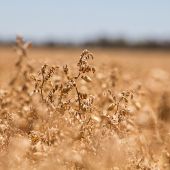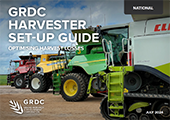Harvest resources
For the nation’s grain growers, harvest is the most critical time of the year and the culmination of months of managing the crop to optimise yield.
Planning and preparation support the aims of harvest efficiency, safety and profitability.
Our harvest resources cover all aspects of harvest such as:
- preparing crops for harvest
- minimising grain loss at harvest
- reducing harvester fire risk
- farm business considerations.

Maximising canola performance at harvest
Maurie Street, CEO Grain Orana Alliance, talks about windrow timing and direct heading in canola and effects on yield and oil.

Stewardship for pre-harvest application of herbicides in winter crops
The responsibility to avoid herbicide residues in delivered cereal, pulse and oilseed grains sits squarely with grain growers and their advisers.

Early lupin harvest can cut grain losses and optimise quality
Optimum harvest for lupins in WA is at crop maturity when grain moisture levels reach 14 percent. Harvest delays can increase the risks of pod drop, seed shedding, plant lodging, pod shattering and physical damage to seed, which can result in yield losses of 5-20 per cent.

The impact of harvest management in chickpeas
In recent years, chickpeas have transitioned from being generally considered a rotation option between cereal crops to becoming a ‘pillar’ crop of the northern farming system.

Canola – Windrow on time, reap the rewards
This guide will help determine optimal windrow timing.

Reducing the risk of harvester fires
An example of how to set up paddocks and machinery and other measures to reduce the risk of harvester fires.

Reducing harvest fires: the back pocket guide
Harvester fires can not only damage or destroy machinery but can also cause considerable damage to surrounding crops and properties and endanger life.

Tips to avoid harvester fires
Harvester fires can damage equipment, destroy crop and infrastructure and endanger life.
























